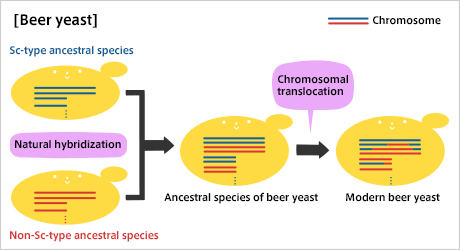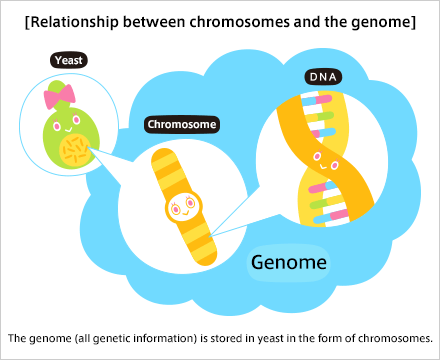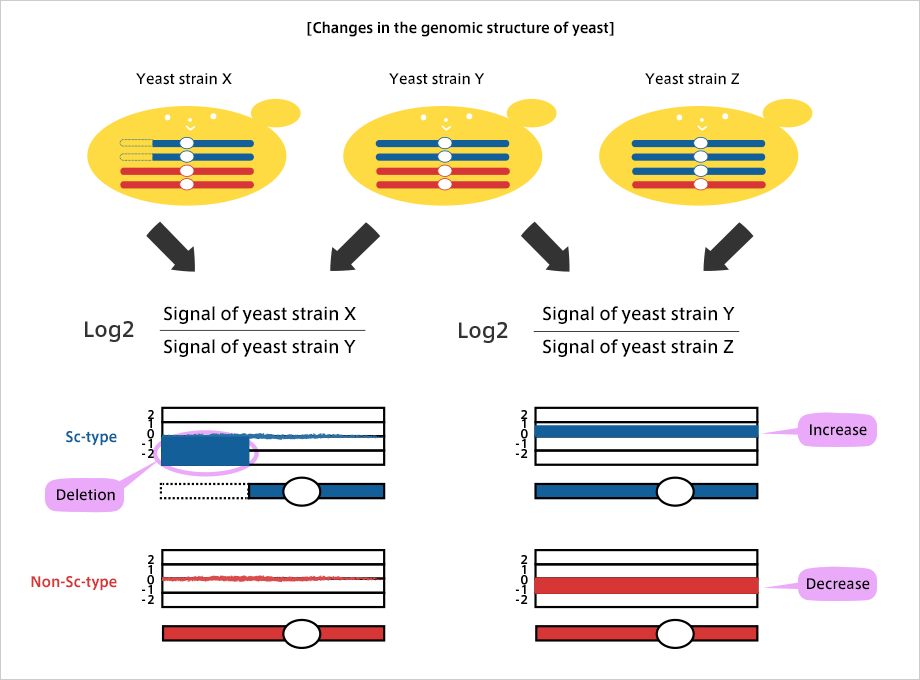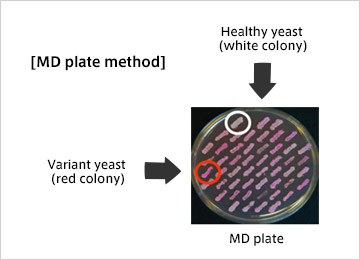- Suntory Global Innovation Center
- > Research & Technology
- > World first! Suntory maps the genome of beer yeast
- > Using genetic diagnostics to analyze yeast health
Research & Technology

Beer yeast acquired its complex chromosomal structure as the result of natural hybridization between S. cerevisiae and related species and subsequent translocations between many heterologous chromosomes.


We use enzymes to cleave genomic DNA and hybridize the resulting fragments with a DNA microarray in order to approximate the structure and number of the respective chromosomes.
For example, this method identifies how some kind of stress to the Y chromosome structure passing into the X or Z chromosome structure triggers structural changes in the strain.


We also developed a method called the MD plate method, which is able to monitor structural changes in the yeast genome at breweries even faster than the DNA microarray.
We can distinguish healthy yeast (white colony) from variant yeast (red colony) on an MD plate.
Conducting these “health checkups” for yeast allow us to create better conditions for our yeast, which in turn creates a more delicious product for our customers.
- Reference
- Hiroshi Kubota and Yoshihiro Nakao, Journal of the Brewing Society of Japan, vol. 105, 8-15 (2010)
* The department name, title, and photo are as of the time of the production (interview).
* The department name, title, and photo are as of the time of the production (interview).

